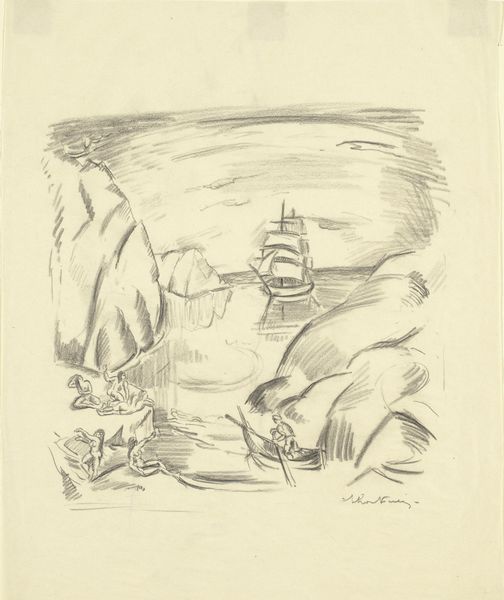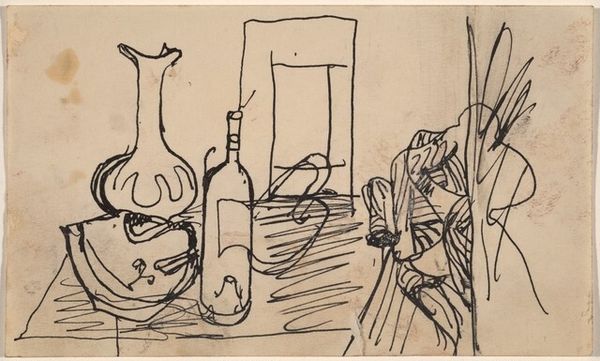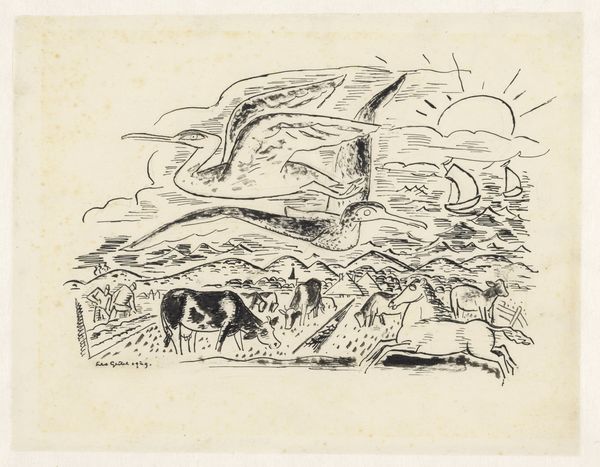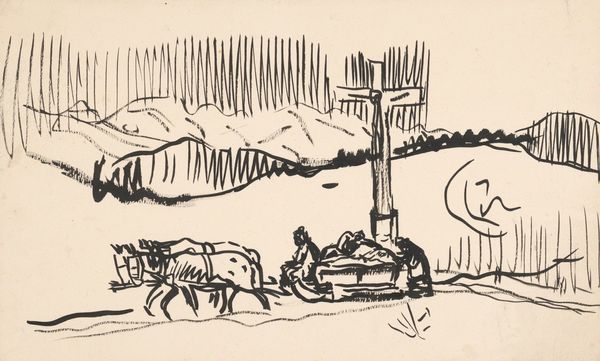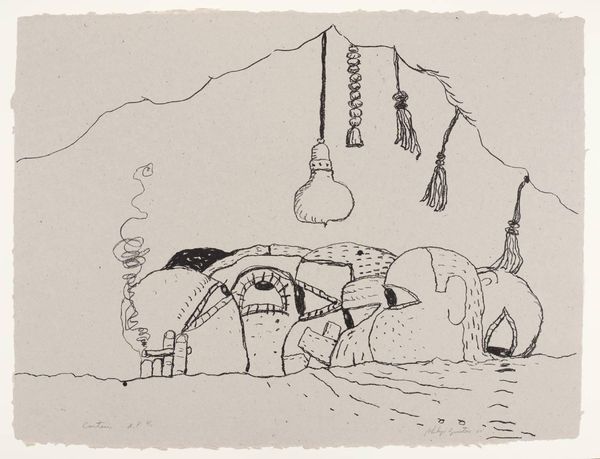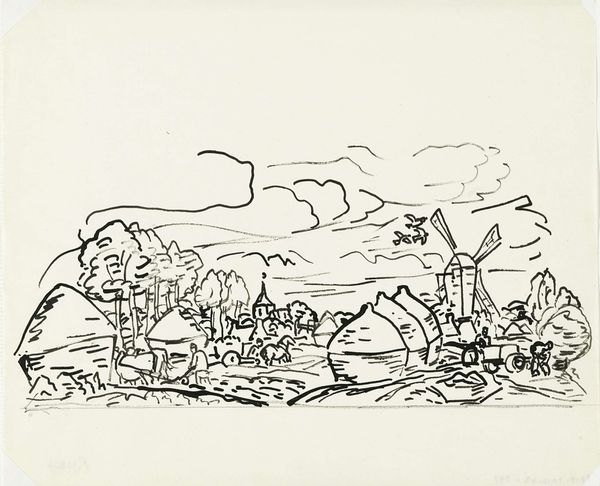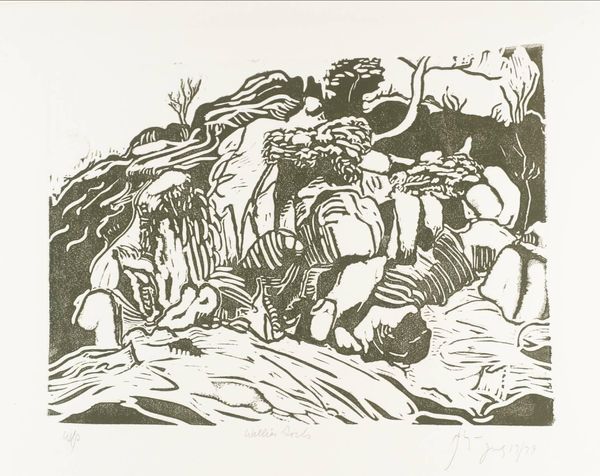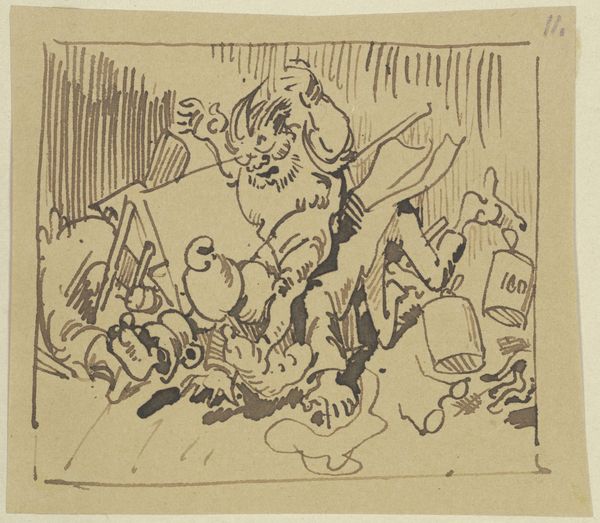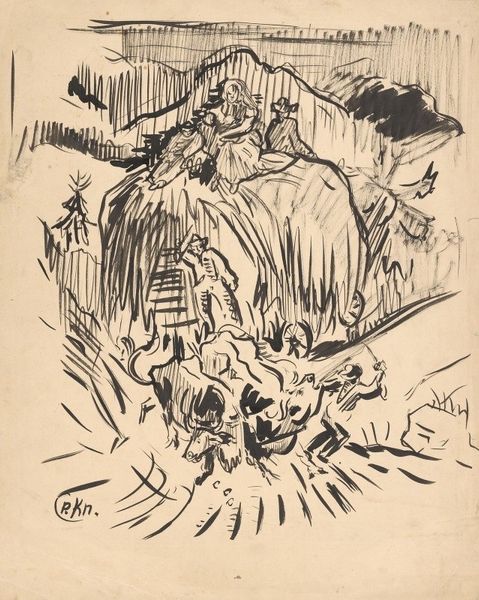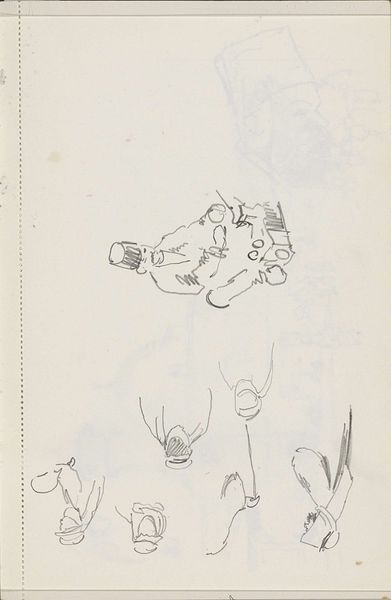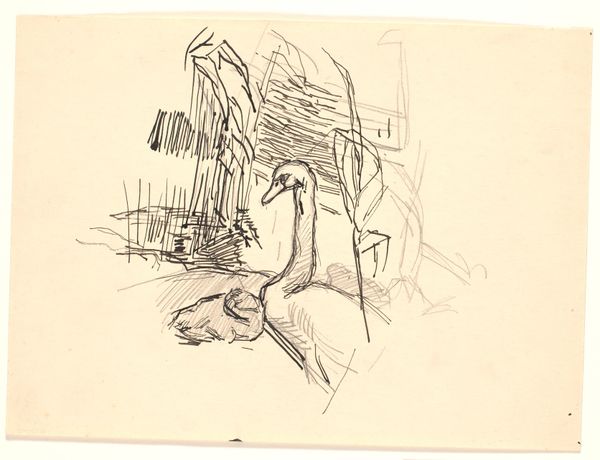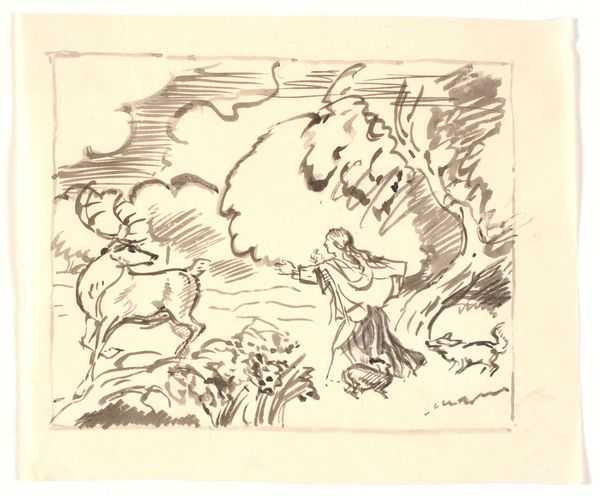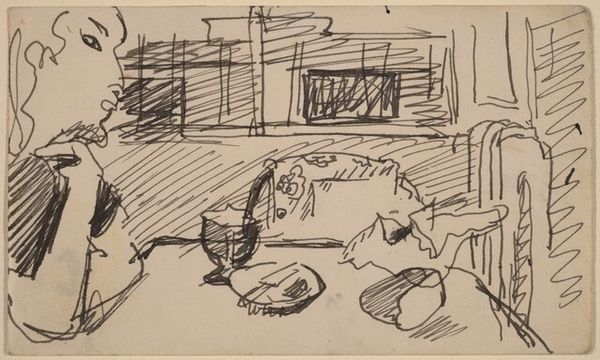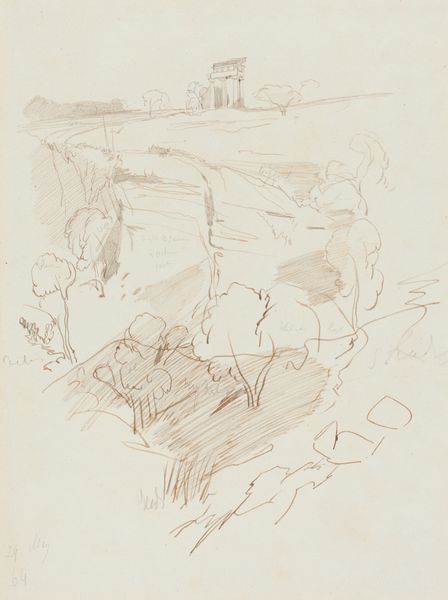
Dimensions: sheet: 48.26 × 63.82 cm (19 × 25 1/8 in.)
Copyright: National Gallery of Art: CC0 1.0
Curator: Editor: So, this is Philip Guston’s Untitled ink and graphite drawing from 1975. There's a striking contrast between the almost whimsical, cartoonish objects and what feels like a heavier, more burdened emotional landscape. How do you interpret this work? Curator: Well, the personal and the political were inextricably linked for Guston, especially in his later work. Look at the composition – domestic objects, yes, but also those hooded figures, reminiscent of the KKK, rising from what appears to be rubble. What do these juxtapositions suggest to you about America in the 70s? Editor: That’s intense. I see how those almost awkwardly drawn objects alongside what might be read as rising smoke or debris could speak to a kind of social unrest, a destruction of ideals, maybe? The hooded figures certainly complicate things. Curator: Exactly. He faced a lot of criticism for including such imagery, with many seeing it as insensitive, even supportive. But consider Guston’s intent: a Jewish artist grappling with the banality of evil, confronting uncomfortable truths about white supremacy and its presence in everyday life. How does situating this piece within that context shift your understanding? Editor: It makes it far less whimsical and far more of a critical commentary on complicity and the ever-present shadow of bigotry, especially at the time, as the Civil Rights Movement was changing American society. Curator: Precisely. It’s not comfortable viewing, but it forces us to confront the insidious nature of prejudice and the artist's own struggle to understand his place within it. Editor: I see it differently now. I appreciate how Guston uses such simple forms to represent these big, complex, issues. It definitely brings the personal struggle into a much larger political arena. Curator: Absolutely. It is a reminder that art can be a powerful tool for self-reflection and societal critique. Editor: Thanks for this interpretation, it gave me an invaluable insight into how artworks engage with identity, politics, and history.
Comments
No comments
Be the first to comment and join the conversation on the ultimate creative platform.
